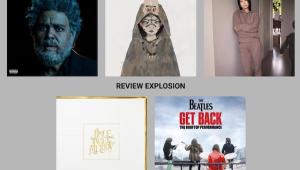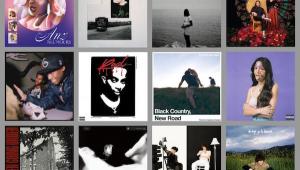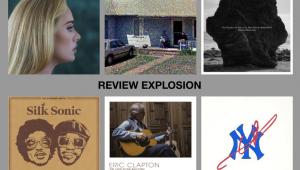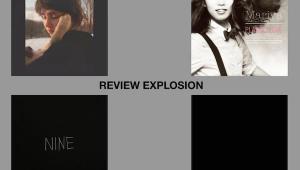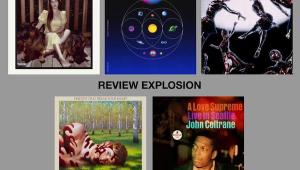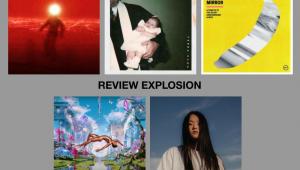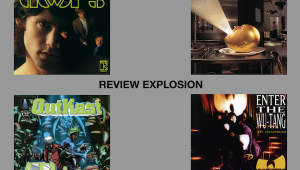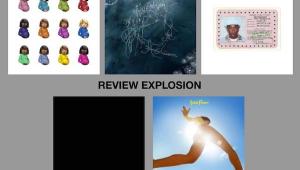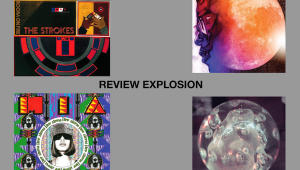Short Cuts, Vol 29: Rare Vinyl Reissues From the Candid Records Archive Include Vital LPs by Unsung Jazz Vocalist Nancy Harrow, Noted Jazz Pianist Jaki Byard, and Legendary Bluesman Memphis Slim
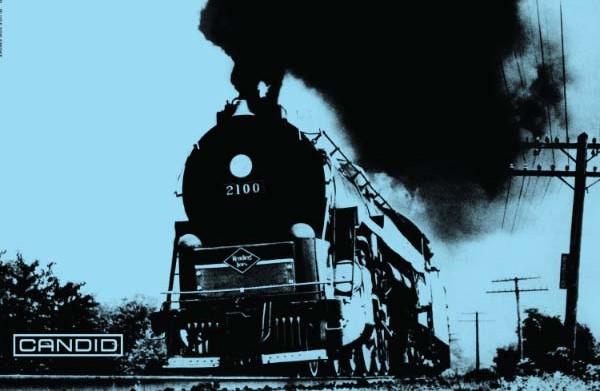
Candid Records was a short-lived (1961-63) but respected label out of New York City owned by producer, arranger, and musician Archie Bleyer. It was a subsidiary of the somewhat iconic Cadence Records, original home to no less than The Everly Brothers. Candid was helmed by legendary jazz critic (and civil rights activist) Nat Hentoff, and the label issued a brief but powerful run of albums that have been happily re-seeing the light of day in recent years from the likes of Charles Mingus and Max Roach. The latest LPs in the Candid reissue series features a trio of hard-to-find titles from underappreciated jazz vocalist Nancy Harrow, noted jazz pianist Jaki Byard, and legendary bluesman Memphis Slim. All three of these titles bear some significant remastering efforts, with Bernie Grundman handling the Jaki Byard title, and Michael Graves handling the Nancy Harrow and Memphis Slim LPs.
Now, most serious jazz fans are at least moderately acquainted with the Candid label. I know I am, for the several titles the label semi-recently released by Mingus, as well as Roach’s groundbreaking, civil-rights-themed statement We Insist! with vocalist Abbey Lincoln and lyricist Oscar Brown. This LP, subtitled Max Roach’s Freedom Now Suite, was also Candid’s very second release, in December 1960. (The phrase “We Insist!” is also being used at the bottom of the balance of the Candid reissue’s hype stickers.)
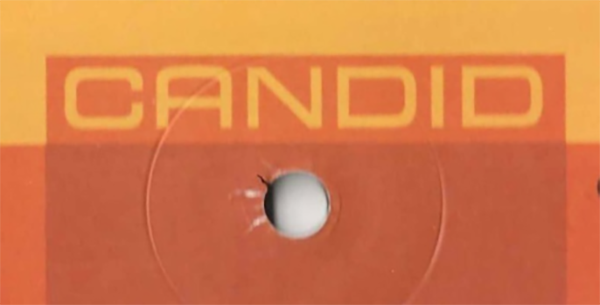
However, if you are also like me, I suspect that not many of you are all that familiar with the company bringing these new Candid reissues back into print today, Exceleration Music. From their official press release about these reissues, we learn: “Exceleration Music is a company formed by global music industry leaders Glen Barros, John Burk, Amy Dietz, Charles Caldas, and Dave Hansen, to invest in the future of independent labels and artists. Established in 2020, [. . . Exceleration] works to preserve and enhance the legacies of both entrepreneurs and their artists alike. To date, Exceleration has acquired or formed strategic relationships with leading independents including +1 Records, Alligator, Azadi, Bloodshot, Candid, Down The Road, Heroic, Kill Rock Stars, Mom+Pop, SideOneDummy, The Ray Charles Foundation / Tangerine Records, and Yep Roc Records.” (We here at AP are well in favor of what Exceleration is doing.)
As far as the DNA goes for the three new Candid releases appearing in this Short Cuts review, it varies a bit from disc to disc. For example, we know that the Nancy Harrow and Memphis Slim LPs were remastered by the aforementioned Michael Graves, so there is in all likelihood a digital stage inherent on these releases — which isn’t necessarily a bad thing, folks, especially when dealing with 60-plus year old tapes! However, the Jaki Byard album sports a proud hype sticker (shown below) stating, “All Analog Remaster by Bernie Grundman,” so that LP pressing was probably cut direct from the original tape source. We contacted the label directly for confirmation as to where these discs were made, and they told us in response that the Byard vinyl was pressed by Independent Record Pressing (IRP), though they did not yet confirm if the other two LPs were pressed there as well. (If we get further updates on any of that, we will include them here.)

In general, these three pressings are not bad at all. Some of my LPs had moderate warp — and one album had noticeable surface-noise issues — so I can’t rank them as perfect. (More on those details ahead in each individual review that follows.) The SRP is very fair, as each LP is set at a reasonable $28.99, respectively. All of them are available via Music Direct, and you can click on the individual MD link graphic that follows each review to get your own copy/copies.
The packaging is made of simple white oaktag-style thin cardboard with artwork printed directly to it, so set your expectations realistically that these releases are not fully akin to the fancier, vintage-style, layered and laminated tip-on construction we have come to know from releases in the Blue Note Tone Poet and Verve/Acoustic Sounds reissue series. But overall, the original Candid artwork is generally reproduced nicely for these three LPs, and the powers that be also happily recreated the period-accurate orange-yellow Candid label design shown a few grafs earlier in this introduction. Each of these LPs also comes housed in a plastic-lined audiophile-grade inner sleeve.
Given that originals of the balance of these Candid titles are somewhat elusive out there in the collector’s marketplace and not super-in-demand, a good basic reissue series of any kind is welcome to make music like this more accessible to broader audiences. I know I’m more than glad to have new, clean copies of them all myself.
And, with that, let’s get to reviewing each Candid title individually, and how they rank on the AP ratings scale.
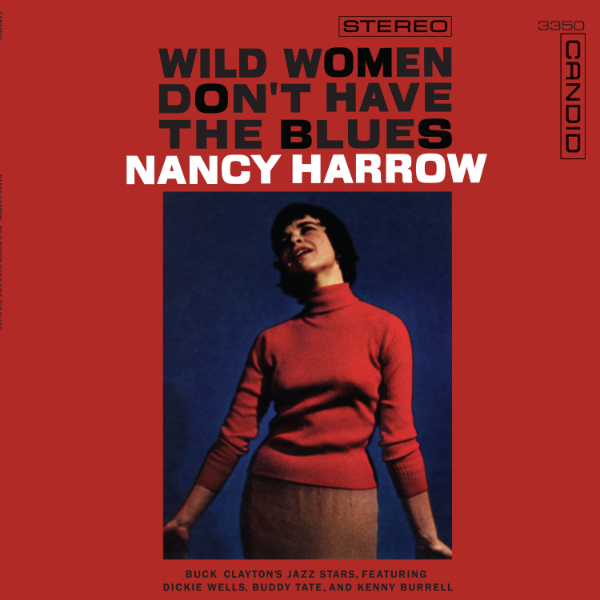
NANCY HARROW
WILD WOMEN DON’T HAVE THE BLUES
1LP (Candid)
MUSIC: 9
SOUND: 8
The biggest surprise of this trio of releases is the 1961 debut LP by singer Nancy Harrow titled Wild Women Don’t Have The Blues. “Nancy who?,” you might ask. Yeah, I said the same thing!
Apparently, Harrow was on the New York jazz scene in the late ’50s, and when producer Nat Hentoff finally saw her performing, he felt compelled to pull a band together for her recording debut under the direction of trumpeter Buck Clayton. And quite a band it was, including the likes of Count Basie alumnus Dickie Wells on trombone, Milt Hinton on bass, and Kenny Burrell on guitar.
Originally engineered by Bob d’Orleans — who seems to have worked on most of Candid’s releases, but whose name also showed up years later working on albums from the likes of the hard-rockin’ trio Mountain! — and under the supervision of Hentoff, Wild Women Don’t Have The Blues was very well-recorded with Neumann U 47, Electrovoice EV 667, RCA 44BX, and Western Electric 639 microphones (per Hentoff’s detailed liner notes), all of its music laid down simultaneously to the monaural and stereophonic tape machines used at the time.
Despite a bit of rollercoaster warpage, my copy of Nancy Harrow’s Wild Women Don’t Have The Blues did play very quietly and cleanly. (Footnote 1) Happily, the disc was also well-centered. The tapes sound like they were in good condition to start with, as I’m not hearing any significant distortion happening here. There is a little crispy (perhaps digitally derived) fuzz around the high-end edges of Harrow’s voice, but that also may just be how all those mics captured her voice back in the day. The drums, horns, bass, piano, and guitars backing her all sound rich, round, and warm. This is generally a very good-sounding recording, and quite good-sounding record.
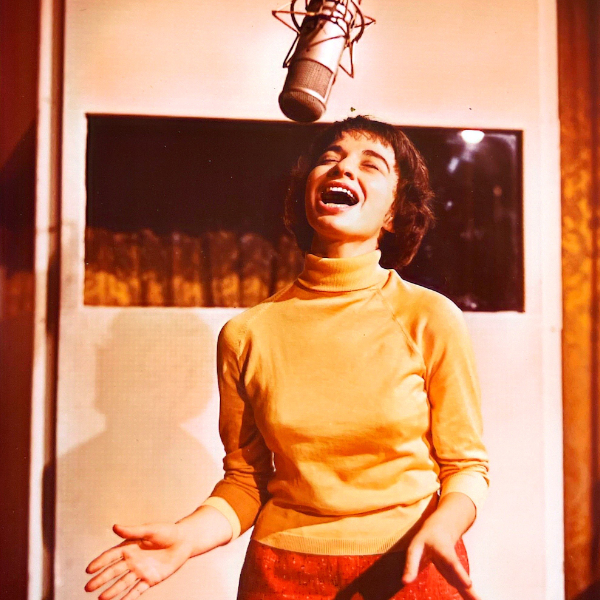
Harrow’s voice is quite enjoyable, and she is certainly very talented. If I were to offer you a mental picture to describe her sound, I’d place Harrow somewhere between the middle-American sweet-swagger of Peggy Lee, June Christy, and Anita O’Day, and the wholesome, corn-fed country-swingin’ Californian lustre of Colleen Summers (a.k.a. Mary Ford, wife of Les Paul), all with that “just right” touch of gritty New York-sassy street sensibility a la Sarah Vaughan.
So, if Harrow’s so good, why did so few of us hear about her? Well, apparently, shortly after making this album, Harrow took a decade or so off to raise her family (including her son Damon Krukowski, drummer of the influential ’80s dream-pop band Galaxie 500!). But she is still around — 95 years young, as of this posting! — and you can read much more about her quite impressive life/career trajectory on her own site, right here. Harrow has released numerous other albums over the years, so I know I’ll be checking out more of her back catalog.
The Music rates a 9, and the Sound gets an 8. As noted at the outset, of the three releases in this Short Cuts review, Nancy Harrow’s Wild Women Don’t Have The Blues is the most significant discovery for this writer (as well as AP editor Mike Mettler!), and I suspect it’s one that fans of vocal jazz will want to snap up sooner than later.
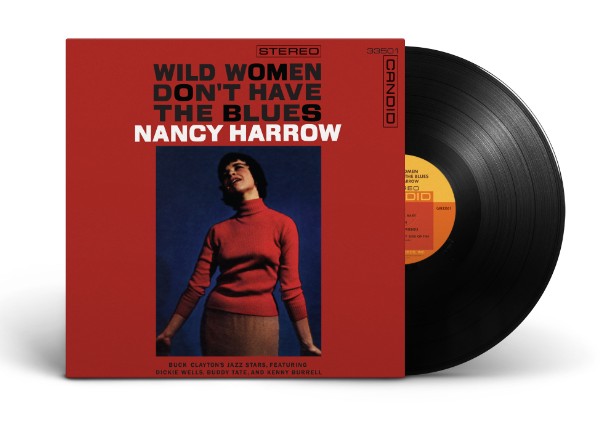
Side A
1. Take Me Back Baby
2. All Too Soon
3. Can’t We Be Friends
4. On The Sunny Side Of The Street
Side B
1. Wild Women Don’t Have The Blues
2. I’ve Got The World On A String
3. I Don’t Know What Kind Of Blues I’ve Got
4. Blues For Yesterday
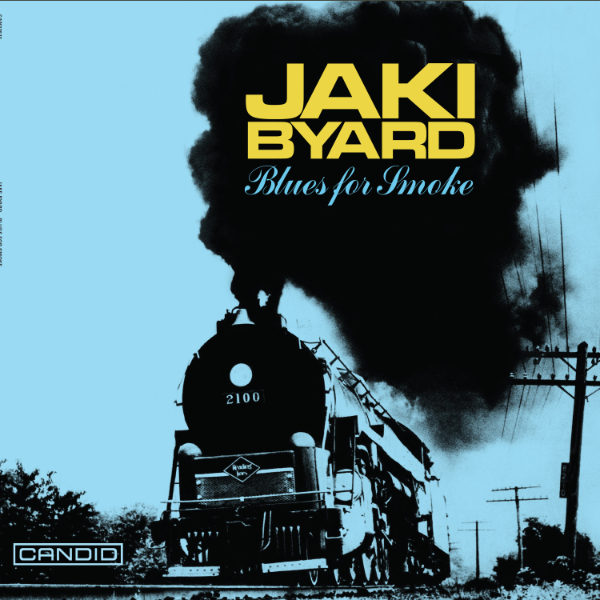
JAKI BYARD
BLUES FOR SMOKE
1LP (Candid)
MUSIC: 7
SOUND: 6
Recorded in 1960, Blues for Smoke, an early release by now legendary jazz pianist Jaki Byard, is a sweet gem, albeit a bit rough around the edges. From my interwebs sleuthing, it seems this album had an initial release in Japan around 1971 with different cover art (as shown below), but it only received a broader release in the U.S. around 1988 (thus explaining the date listed at the end of the back-cover liner notes penned by author Alan Bates).
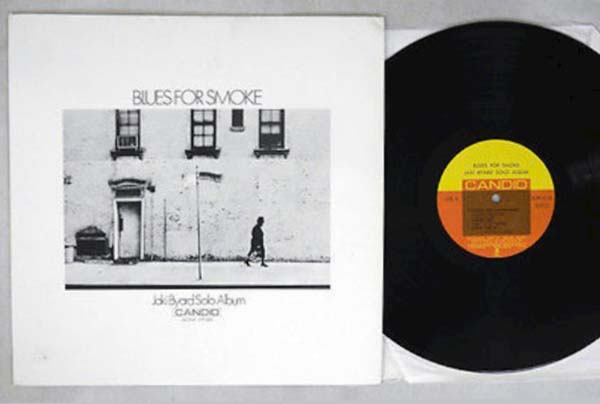
My new 2025 pressing of Blues for Smoke was quite dish-warped, but it generally played fine. More concerning is that my pressing itself was a bit noisy at the beginning of Side A, but it quieted down soon enough. Unfortunately, one side of my copy was a bit off-center, which is not ideal for piano-based music especially. Hopefully, your copy won’t have these issues. (Footnote 2)
That aside, Byard’s actual performances of his original compositions on Blues for Smoke are certainly lovely, often whimsical, and overall interesting solo piano excursions from an eventually renowned instrumentalist. Byard can also be heard on Eric Dolphy Quintet’s iconic 1960 Prestige/New Jazz release Outward Bound, a recording that helped put him on the map (among many others). Byard subsequently played with Mingus, initially heard by many on Impulse! classics such as January 1964’s Mingus Mingus Mingus Mingus Mingus (a personal favorite, btw!) and July 1963’s The Black Saint and The Sinner Lady.
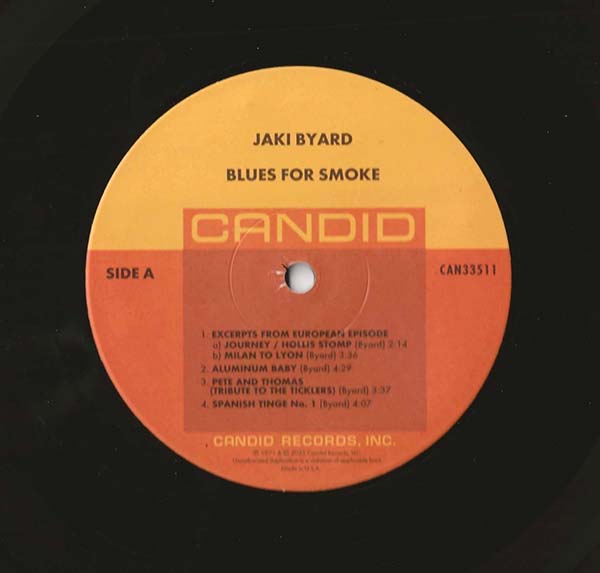
On the Blues for Smoke LP, I’ve been enjoying “Excerpts From European Episode” (Side A, Track 1), which is apparently part of a larger “Dance Suite” not included on this album. I particularly like section b), “Milan to Lyon,” which swings between classical baroque chamber flavors to old-school boogie-woogie. “Aluminum Baby” (Side A, Track 2) occupies some fascinating spaces perhaps inspired by the likes of Bill Evans, Thelonious Monk, Art Tatum, and perhaps even Claude Debussy. Meanwhile, “One Two Five” (Side B, Track 5) feels like an homage to Monk via Oscar Peterson.
While the album is listed on the cover as being in stereo, after listening to it again, I am wondering if a mono master was used to make this reissue. A more elaborate mic-placement strategy might have delivered a more distinct stereo soundstage across the keys. This presentation feels quite static, and centrally focused between the speakers.
Throughout the album, there are some audible anomalies — moments of distortion, and such — that might be inherent to the master tape. It makes me wonder if this album might have been a good candidate for restoration treatment via Plangent Processes (something that many of you know I have written about at times previously here on AP). There was quite a bit of grittiness evident that doesn’t sound especially musical, just kind of fuzzy.
For comparison, I did give a brief listen to a version of Blues for Smoke that was streaming on YouTube, and found it to be much hissier there, but also bearing a more natural and less claustrophobic feel. I also heard some more serious tape glitches on that version, so perhaps there are different sources circulating out there.
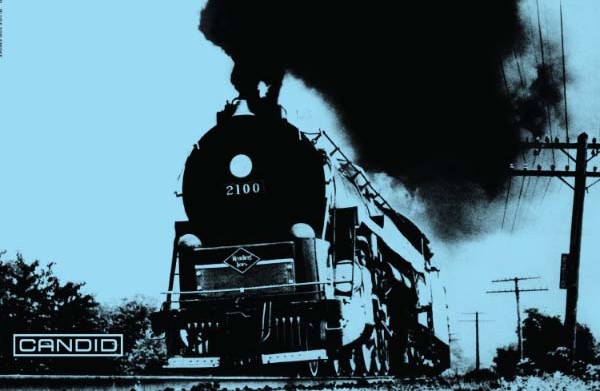
After reading some related promotional copy via Music Direct, I had to go back and listen again to this Jaki Byard album more closely. The MD team have an interesting perspective on this release that’s worth considering: “Recorded as a solo-piano showcase for Byard’s incredible gifts as a player, composer, and jazz historian, the exquisitely engineered session is given new life by Bernie Grundman’s sensitive remastering. With this release, Candid is hoping to make Jaki Byard’s very first album the Rosetta stone of jazz piano it was intended to be.”
While I can’t vouch for the adjectival engineering qualities touted there, I can say that Blues for Smoke is certainly an interesting first effort from a pianist who would soon be making amazing music with some of the most important names in jazz, as well as on his own releases. The Music is a 7, and the Sound is a 6 — but if you are already a fan of Jaki Byard, or even new to the music of this brilliant player, and don’t have Blues for Smoke in any form, you’ll probably want to get this fresh new Candid vinyl release.
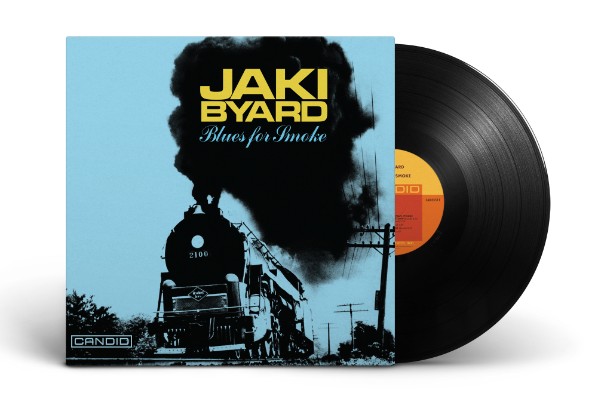
Side A
1. Excerpts From European Episode
a) Journey / Hollis Stomp / b) Milan To Lyon
2. Aluminum Baby
3. Pete And Thomas
4. Spanish Tinge No. 1
Side B
1. Flight Of The Fly
2. Blues For Smoke
3. Jaki’s Blues Next
4. Diane’s Melody
5. One Two Five
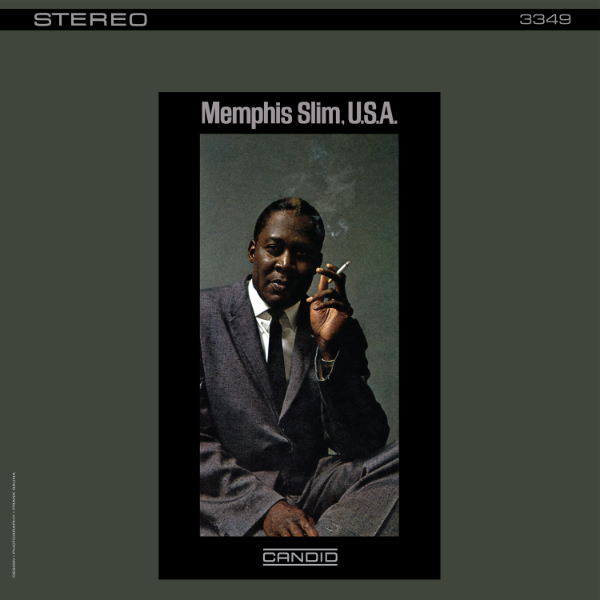
MEMPHIS SLIM
MEMPHIS SLIM, U.S.A.
1LP (Candid)
MUSIC: 6
SOUND: 7
Memphis Slim’s Memphis Slim, U.S.A. seems to be one of the legendary blues-singin’, boogie-woogie-in’ piano player’s last albums before his moving from America to Paris fulltime in 1962. A mixed bag of an album, 1961’s Memphis Slim, U.S.A. is not without its charms. Most of Slim’s solo piano and vocal takes here are quite fine, in fact.
However, I found the tracks with guitarist Arbee Stidham super-curious (in a The Shags sort of way), and ultimately puzzling. Stidham, who I had not heard of prior to this release, was apparently a saxophonist much of his life, but after a bad car accident in the late 1950s, he had to give up his chosen instrument and switch to guitar. And from these recordings, frankly, it sounds like he was still learning how to play it at that time.
Now, don’t get me wrong — I do like me some loose outside skronk as much as anyone, but Stidham’s guitars aren’t quite up to snuff, so I don’t think this was intentional. Some songs sound like he didn’t know all the right chords just yet, making it somewhat of a chore to listen to them. That really stands out against the backdrop of Memphis Slim’s otherwise superlative boogie-’n’-blues. (Footnote 3)
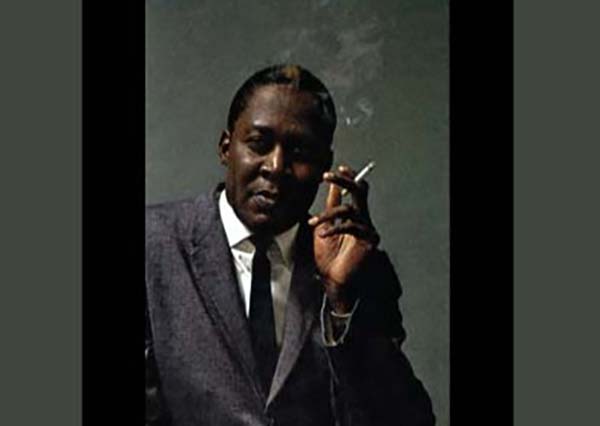
Tracks like “New Key to the Highway” (Side A, Track 4), which feature harmonica player Jazz Gillum (another artist I’d not come across before), are much more successful, fortunately. Sadly, these recordings with Memphis Slim are among his last, apparently, and Gillum passed away a few years later, in 1966.
As far as whether you need Memphis Slim, U.S.A. in your collection, that will be a personal decision based on how much you like the man’s music. The Music is a 6 (collectively; some tracks rank higher), and the Sound is a 7. There are many Memphis Slim albums out there, of course, and while I do like this LP, I can’t call it a favorite of mine, musically speaking. That said, Memphis Slim, U.S.A. might be right up your alley, given its “free-associative” nature (per Nat Hentoff’s recording-style suggestion noted in the liners), so you might want to give it a shot.
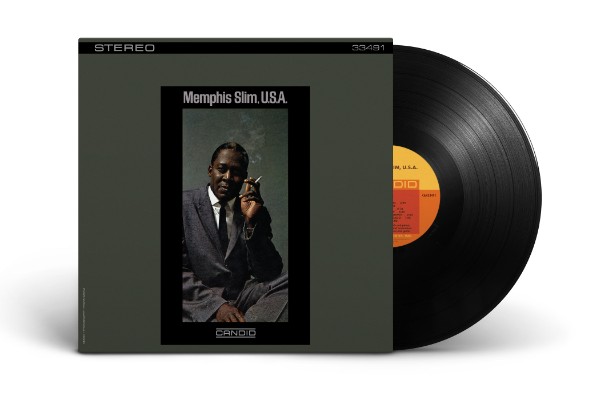
Side A
1. Born With The Blues
2. Just Let Me Be
3. Red Haired Boogie
4. Blue And Disgusted
5. New Key To The Highway
6. I’d Take Her To Chicago
7. Harlem Bound
Side B
1. El Capitan
2. I Just Landed In Your Town
3. John Henry
4. I Believe I’ll Settle Down
5. Bad Luck And Troubles
6. Late Afternoon Blues
7. Memphis Slim, U.S.A.
Author bio: Mark Smotroff is an avid vinyl collector who has also worked in marketing communications for decades. He has reviewed music for eCoustics, among others, and you can see more of his impressive C.V. at LinkedIn.
Footnote 1: AP editor Mike Mettler adds: Luckily, my copy of Nancy Harrow’s Wild Women Don’t Have The Blues LP didn’t display any of the warpage Mark’s copy had — and it played quite beautifully on my system too, with only a very few, limited skitches of surface noise on either side. What a wonderful discovery this album has been, I must say!
Footnote 2: Mettler here again — while my copy of Jaki Byard’s Blues for Smoke did evidence some slight warpage, playback wasn’t affected on either side of the LP, and I could easily hear details like his various foot-pedal shifts all throughout his piano playing. And, luckily, there was no surface noise on my copy, either.
Footnote 3: Mettler here, for a third time — I tend to agree with Mark in regard to the guitar playing, per se. If the Memphis Slim, U.S.A. LP had more cuts like “Red Haired Boogie” (Side A, Track 3) and “Blue and Disgusted” (Side A, Track 4), a pair of veritable Memphis Slim solo-piano tour de forces, the overall Music rating would probably notch upwards to at least an 8, maybe even higher.






